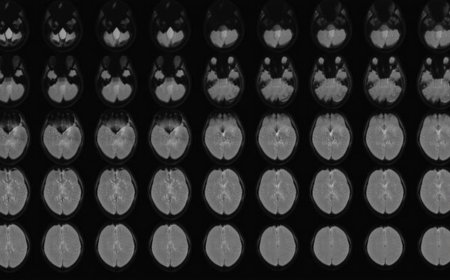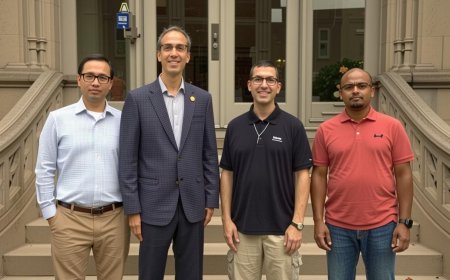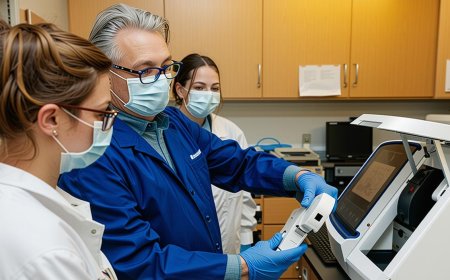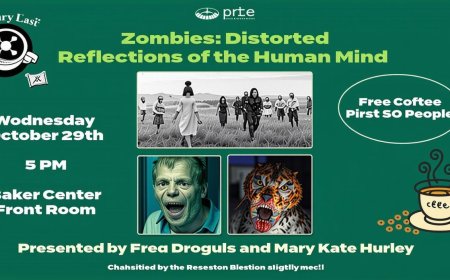Thriving Through Change: Mastering Burnout with Science | PRIMENEWSNOW

Workplace burnout is a topic that has been explored extensively, yet it remains a pressing issue due to its evolving nature. Studies reveal that organizations clinging to outdated practices struggle with innovation, engagement, and productivity. Breaking free from this cycle necessitates change, but ironically, change itself can be a significant contributor to burnout. Research indicates that individuals who manage stress effectively tend to perform better. Understanding the link between physiology, curiosity, and performance is crucial in today’s rapidly changing environment, especially with the rise of AI. The challenge lies in managing change without succumbing to burnout.
The Brain’s Response to Workplace Burnout
Burnout is often characterized by exhaustion, frustration, and a lack of motivation, but these symptoms originate in the brain. The brain is designed to recognize patterns to conserve energy. Familiar tasks become efficient as the brain uses less effort. However, change disrupts these patterns, requiring more focus and energy. While occasional change enhances adaptability, frequent change can be exhausting.
Stress hormones like cortisol and norepinephrine are released to maintain alertness, but over time, they deplete energy, mood, and concentration. The prefrontal cortex, responsible for planning and decision-making, loses efficiency, while the limbic system becomes more reactive. This imbalance results in irritability, impulsive decisions, and reduced creativity. What appears as disengagement or resistance to change is often the brain signaling it has reached its limit.
This cycle can affect entire teams. Meetings may become less about ideas and more about updates. Risk-taking diminishes as mental bandwidth is consumed by immediate tasks. Leaders may misinterpret this as a performance issue, but it’s the biological impact of constant adaptation. The more people strive to keep up with change, the faster their energy wanes, leading to cognitive fatigue where even minor adjustments feel overwhelming.
Curiosity: A Remedy for Burnout
While stress triggers certain chemical reactions, curiosity triggers others. When something piques interest, the brain releases dopamine, a neurotransmitter that fuels motivation and learning. Dopamine makes discovery rewarding, encouraging further exploration. This chemical shift counteracts stress hormones, shifting focus from potential failures to learning opportunities.
Curiosity also activates brain areas linked to empathy and connection, fostering collaboration and feedback. When teams are encouraged to ask questions and share perspectives, they transition from survival mode to problem-solving mode, restoring energy and engagement. Organizations that embed curiosity into their culture see employees actively shaping change rather than merely enduring it.
Curiosity doesn’t eliminate stress but transforms its interpretation. A curious brain views challenges as learning opportunities rather than threats. Dopamine helps maintain focus and optimism, even amid uncertainty. While curiosity alleviates stress, balancing it with recovery and rest is essential. Curiosity provides a productive outlet for stress.
The Impact of Unrelenting Change Without Recovery
Many organizations underestimate the brain’s recovery time from change. Implementing consecutive major initiatives without breaks creates a continuous cognitive load. Employees must adapt to new systems, processes, or roles before adjusting to previous changes. Without time to reflect or adjust, their brains remain in a high-alert state, leading to change fatigue, where people become numb to new initiatives and disengage.
Most employees can adapt to change with clarity and recovery time. Problems arise when change is too rapid. Constant change deprives people of the satisfaction of mastering something before moving on. This lack of closure contributes to burnout as the brain remains in a constant state of readiness, wearing down motivation and increasing turnover, especially among high achievers.
Encouraging Curiosity to Mitigate Burnout
Leaders have significant influence over this balance. Cultivating a culture of curiosity starts with small, consistent actions. By asking thoughtful questions, seeking feedback, and showing genuine interest in new ideas, leaders model desired behaviors. This fosters psychological safety, crucial for innovation and engagement. People are more willing to share ideas and concerns when their curiosity is met with openness.
Leaders can manage change pace by sequencing initiatives and incorporating reflection periods into workflows. Simple practices like ending meetings with discussions on lessons learned keep the focus on discovery. These pauses allow the brain to process change and reset energy. Encouraging cross-functional discussions or innovation hours reignites motivation and allows exploration without fear of failure. Reinforcing curiosity as part of the job helps employees view change as an opportunity to learn.
Personal Strategies for Managing Burnout
Even if organizations lag in fostering curiosity, individuals can take steps to protect their energy. Building small habits that trigger curiosity throughout the day helps maintain motivation. Taking breaks to explore unrelated topics, reflecting on successful meetings, or asking colleagues about their approaches stimulates dopamine release, refreshing attention and creativity.
Reframing thoughts about change is also effective. Instead of asking, “Why is this happening?” try asking, “What can I learn from this?” This shift directs focus toward exploration and growth, strengthening neural pathways for adaptability and problem-solving. Sleep, exercise, and nutrition are vital as they regulate cortisol levels and help the brain reset, supporting mental and physical resilience.
Thriving Amidst Change
Workplace burnout reflects the brain’s response to constant change and suppressed curiosity. The same physiological systems that drain energy can restore it when curiosity is encouraged. Leaders and organizations that understand this balance create environments where people thrive under change rather than feel overwhelmed. The future of work depends on this shift. While adaptability remains crucial, maintaining curiosity may be the most powerful form of resilience.
What's Your Reaction?
 Like
0
Like
0
 Dislike
0
Dislike
0
 Love
0
Love
0
 Funny
0
Funny
0
 Angry
0
Angry
0
 Sad
0
Sad
0
 Wow
0
Wow
0


















































